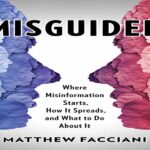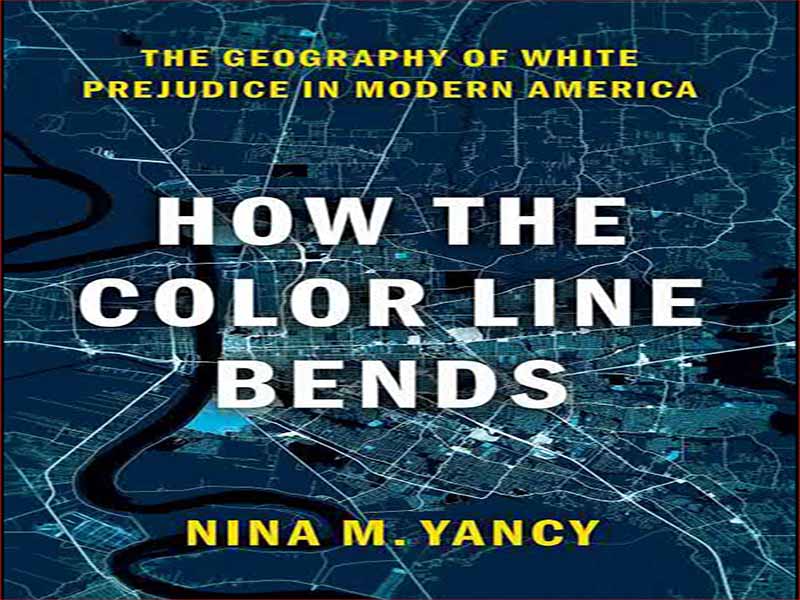- عنوان کتاب: How the Color Line Bends / The Geography of White Prejudice in Modern America
- نویسنده/انتشارات: Nina M. Yancy
- حوزه: جامعه شناسی آمریکا
- سال انتشار: 2022
- تعداد صفحه: 333
- زبان اصلی: انگلیسی
- نوع فایل: pdf
- حجم فایل: 2.85 مگابایت
گرمای هوا حتی در زیر سایه یکی از درختان بلوط سر به فلک کشیده که محوطه دانشگاه ایالتی لوئیزیانا (LSU) را پوشانده بود، بسیار طاقت فرسا بود. پتویی از رطوبت فضای دانشگاه را سنگین کرده بود، و سکوتی پرتنش. شروع خونین تابستان در باتون روژ بود. مراسم بیداری که من در آن شرکت می کردم برای بزرگداشت دو رویداد غم انگیزی بود که در ژوئیه 2016 رخ داد. اولین مورد، قتل آلتون استرلینگ، یک مرد سیاهپوست 37 ساله بود که توسط یک باتون در فاصله خالی با شش گلوله مورد اصابت گلوله قرار گرفت. افسر پلیس روژ در 5 جولای. رویداد دوم، کشتن سه افسر محلی مجری قانون – مونترل جکسون، متیو جرالد، و برد گارافولا – بود که توسط یک سرباز کهنه سرباز تفنگداران دریایی سیاه پوست از کانزاس سیتی، MO، در اقدامی انتقامجویانه برای مرگ استرلینگ تنها یک هفته تیراندازی کردند. نیمی بعد.3 مضمون شب زنده داری روشن بود: «وحدت» و «شفا» را دعوت می کرد. چیزی که مشخص نبود این بود که قرار است چه میزان استرلینگ در این سرویس گنجانده شود. نماینده هیئت دانشجویی سفید پوست که سخنرانی کرد، اظهارات خود را به عنوان ادای احترام به “فداکاری نهایی افسران” و محکومیت “طاعون خشونت که به جامعه ما راه یافته است.” او از کشتن استرلینگ فقط به عنوان رویدادی یاد کرد که “پیوندهای دوستی” جامعه را آزمایش کرد. نماینده سیاهپوست دانشجویی که بعداً صحبت کرد، ناآرام به نظر می رسید. او گفت: «فقط برای تکرار، ما اینجا هستیم تا همه زندگی ها را بشناسیم. ممکن است احساس کنید که او (با اشاره به سخنران قبلی) اسامی خاصی را نگفته است، اما ما اینجا هستیم تا تمام زندگی ها را “هشیار” کنیم.” از نظر فنی، دانشجوی سیاه پوست آنچه را که برگزارکنندگان به ما گفته بودند «قوانین اصلی» این مراسم بود، مجدداً تأیید کرد: «هیچ طرفی گرفته نخواهد شد». با این حال، اکثر سخنرانان دیگر به روح واقعی آن قوانین پایبند بودند: درباره اهمیت دوست داشتن یکدیگر و محکوم کردن نفرت و خشونت بسیار گفته شد. اما استرلینگ و واقعیتهای زندگی در جامعه فقیر سیاهپوست که در آن زندگی میکرده بود، کاملاً نامرئی بود.
The heat was oppressive, even under the shade of one of the towering oak trees that cover the grounds of Louisiana State University (LSU). A blanket of humidity weighed down the campus, as did a tense silence. It had been a bloody start to summer in Baton Rouge. The vigil I was attending was being held to commemorate two tragic events that took place in July 2016. The first was the killing of Alton Sterling, a 37- year-old Black man who was shot six times at point-blank range by a Baton Rouge police officer on July 5th. The second event was the killing of three local law enforcement officers—Montrell Jackson, Matthew Gerald, and Brad Garafola—who were shot by a Black Marine Corps veteran from Kansas City, MO, in an act of vengeance for Sterling’s death only a week and a half later.3 The theme of the vigil was clear: it called for “unity” and “healing.” What was unclear was how much Sterling was meant to be included in the service. The White student body representative who spoke framed his remarks as a tribute to the “ultimate sacrifice of the officers” and a condemnation of “the plague of violence that has found its way into our community.” He mentioned Sterling’s killing only as an event that tested the community’s “bonds of friendship.” The Black student representative who spoke next appeared uneasy. “Just to reiterate,” he said, “we are here to recognize all the lives. You may feel he (referencing the previous speaker) didn’t say certain names, but we’re here to ‘vigilize’ all the lives.” Technically, the Black student reaffirmed what the organizers had told us were the “ground rules” of the vigil: that “no side would be taken.” Most of the other speakers, however, deferred to the true spirit of those rules: much was said about the importance of loving one another and condemning hate and violence. But Sterling, and the realities of life in the impoverished, Black community where he had lived, were all but invisible.
این کتاب را میتوانید از لینک زیر بصورت رایگان دانلود کنید:
Download: How the Color Line Bends / The Geography of White Prejudice in Modern America




































نظرات کاربران